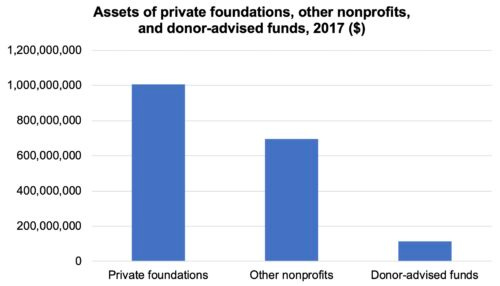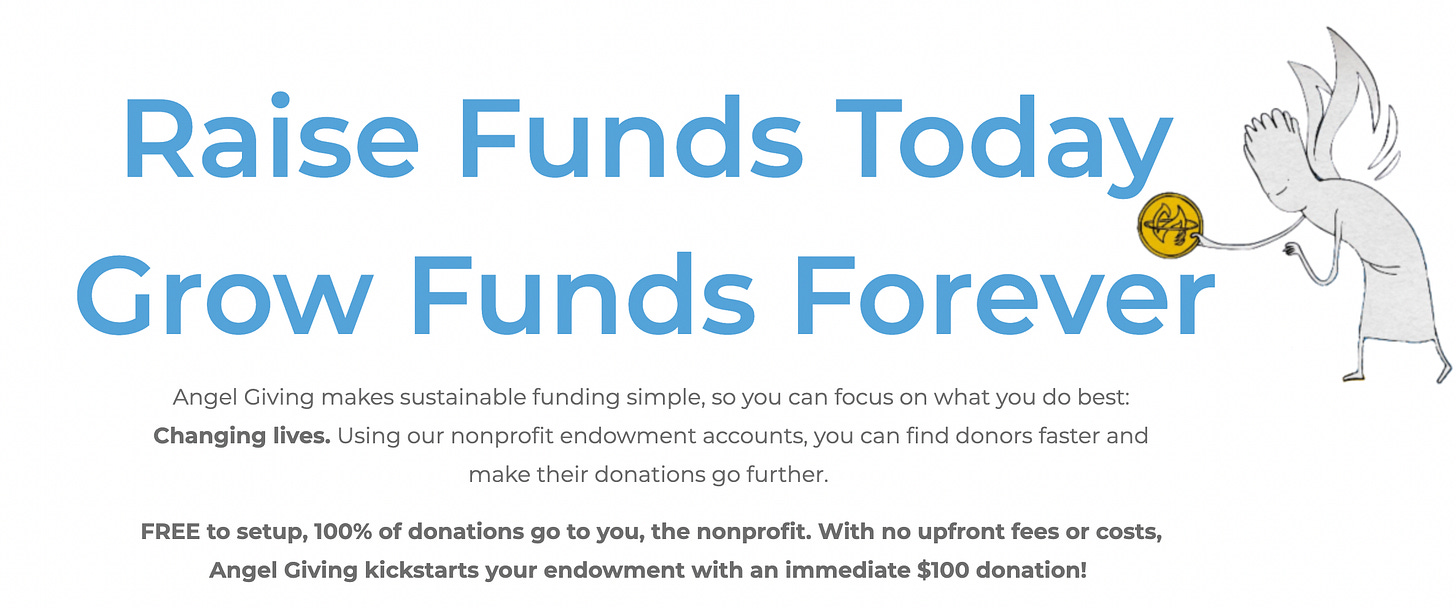Endowments for All Nonprofits, a multi-trillion dollar untapped opportunity
Give Once. Give Forever - Angel Giving, powered by Angel Protocol
It was originally posted on First Followers. This is an adapted version of the original post.
Have you wondered why more nonprofits don’t use endowment as a financial tool to become sustainable, reduce their reliance on donor money, and preserve and grow wealth? That’s how precisely university endowments in the US have become so prominent and influential.
Before we proceed further, what is an endowment? According to Investopedia1,
“An endowment is a donation of money or property to a nonprofit organization that uses the resulting investment income for a specific purpose. An endowment can also refer to the total of a nonprofit institution’s investable assets.”
Issues with setting up an endowment
It’s not so easy to set up an endowment. There are the following barriers, especially for nonprofits in emerging markets:
Investment Expertise - Nonprofits lack the necessary expertise and knowledge to manage investments and grow an endowment fund effectively. Nonprofits often focus on their core mission and may not have the resources or expertise to manage investment portfolios effectively. Investing and managing funds require financial expertise and access to professional investment advisors.
Transparency & Accountability - Managing an endowment requires demonstrating responsible financial stewardship, ensuring transparency in investment decisions, and using income generated from the endowment.
Investable Assets - Unstable investment environments or lack of access to investable assets - especially in emerging markets, the investment environment is not mature, and there are few assets to invest in.
Limited or non-existent legal and tax frameworks are not comprehensive and lack specific definitions and regulations for different types of nonprofit organizations, such as public and private foundations. This makes it even more difficult for community philanthropy organizations to develop and operate. Additionally, the lack of a tax framework doesn’t let endowments utilize tax benefits that generally, US endowments benefit from their investments in capital markets.
Sources of endowment funding - Donors and grant-giving organizations often prefer to fund specific projects or programs rather than contribute to an endowment, especially in local and emerging markets.
Long-term vs. immediate needs - Lack of financial discipline and long-term focus - Most nonprofits are not used to financial wealth management. Hence, they need the proper support and customer education. Many nonprofits operate on limited budgets and must allocate resources to immediate operational needs and program implementation. Setting up an endowment requires diverting a significant portion of their funds towards long-term investments, which can be challenging for organizations with tight financial constraints.
How big is the market?
According to the philanthropy daily2, there was approximately USD 1.7 trillion in the endowments of nonprofit organizations in America as of the end of 2017. That is about the same as the GDP of Canada.
The global NGOs and charitable organizations market reached nearly $255,705.9 million in 2019, increasing at a compound annual growth rate (CAGR) of 4.4% since 2015. The market is expected to reach $325,651.4 million in 2025 at a CAGR of 5.2% and 411,195.4 million in 2030 at a CAGR of 4.8%3.
In India, there are more than 2 million nonprofits4, and in the US, more than 1.5 million nonprofits5. Hence, Endowments is a multi-trillion dollar opportunity completely untapped by the financial system.
The Opportunity - untapped smaller nonprofits in developed & developing markets
"Endowment funds are typically established by larger nonprofits. The average size of nonprofits without endowment funds is $9.6 million in total assets, but that number is 6.4 times higher ($61.5 million) among organizations with endowment funds.6."
So smaller nonprofits can't afford to have a complex structure like an endowment and manage it - hence digital nonprofit endowment product is needed to help nonprofits become financially sustainable over the long term.
Can digital endowment products be a solution?
A digital endowment product allows nonprofits to raise capital for their endowment, source & invest in assets that align with the vision and mission of the parent nonprofit, and able to receive returns that can be used for further investments or rainy day usage or covering general annual operational expenditures.
Precisely, what Angel Giving, powered by Angel Protocol, has been doing, they have developed a digital wealth management product that allows nonprofits to source donors and deploy it in investable digital assets to generate returns, hence preserving and growing wealth, to provide long-term sustainability. Until now, Angel Giving, powered by Angel Protocol, has attracted more than 150 nonprofits, USD 6 M in total raised by these 150 plus nonprofits, to test its endowment product offering.
Angel Protocol is a web3 native protocol, reducing cost and time to launch, deploy and manage the endowment, with minimal middle and back office. Many DAO tooling initiatives, like SmartFunds, Syndicate Protocol, Seed Labs, etc., focus on hedge funds, venture funds, and SPVs at reduced zero or variable costs. Hence, it democratizes venture capital and asset management by allowing people from diverse backgrounds to launch funds with minimal and zero costs.
So why not, Endowments for nonprofits? Hence, Angel Giving.
Endowment Definition, Investopedia
How much money is in nonprofit endowments in America? The Philanthropic Daily
The Nonprofit Sector in Brief 2019, Urban Institute
The Risk, Reward, and Asset Allocation of Nonprofit Endowment Funds, Andrew W. Lo, Egor Matveyev, and Stefan Zeume




